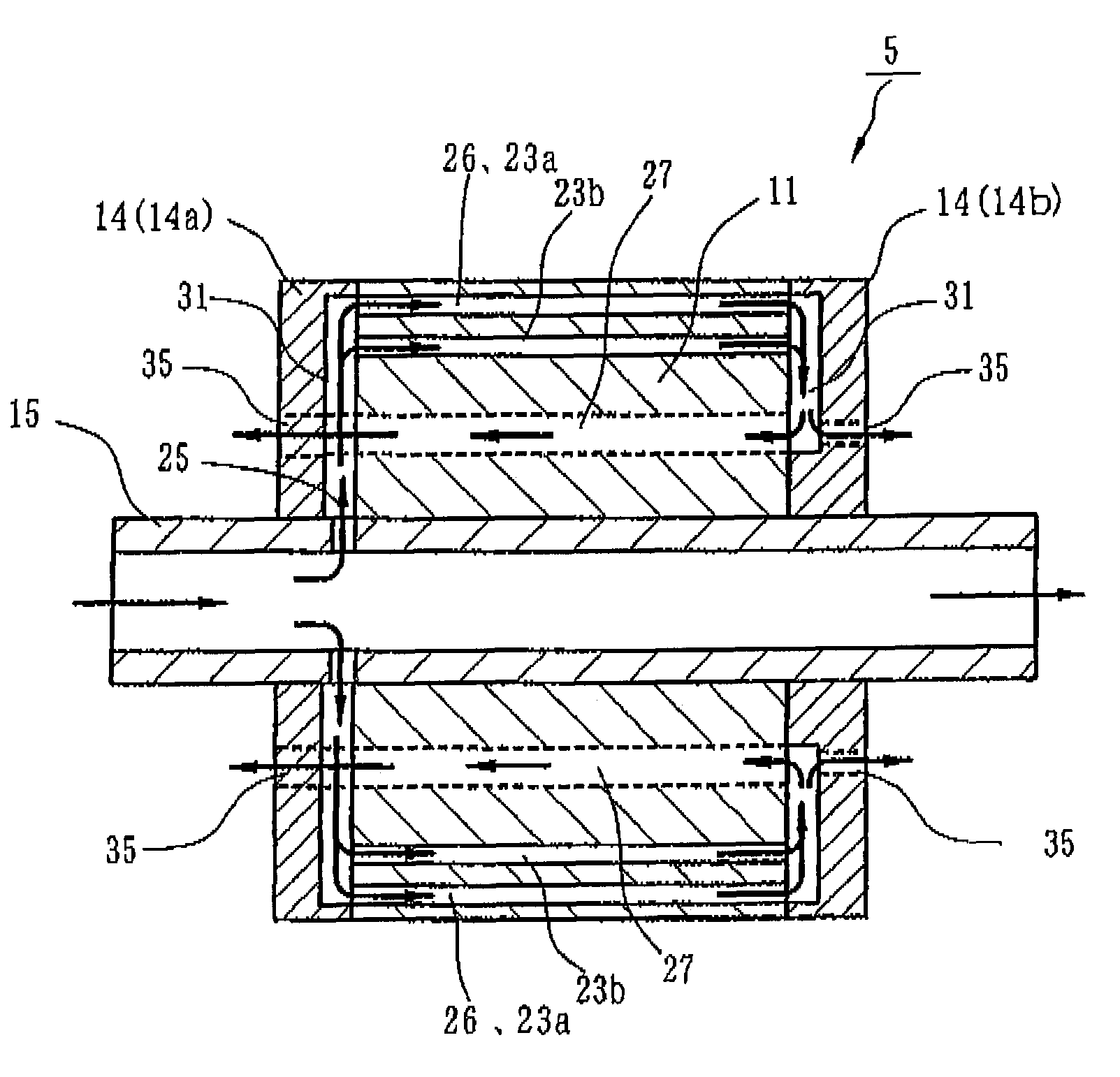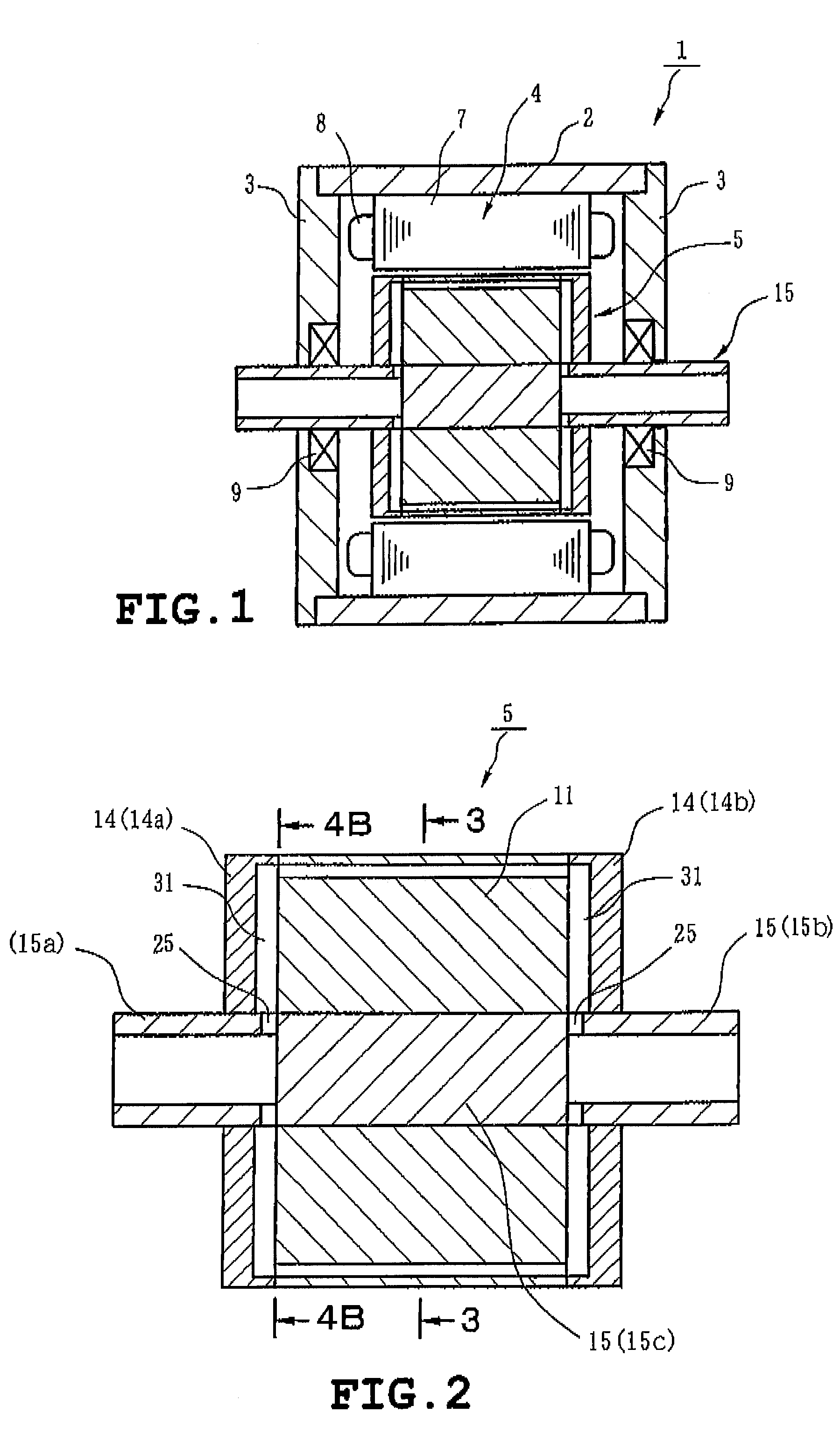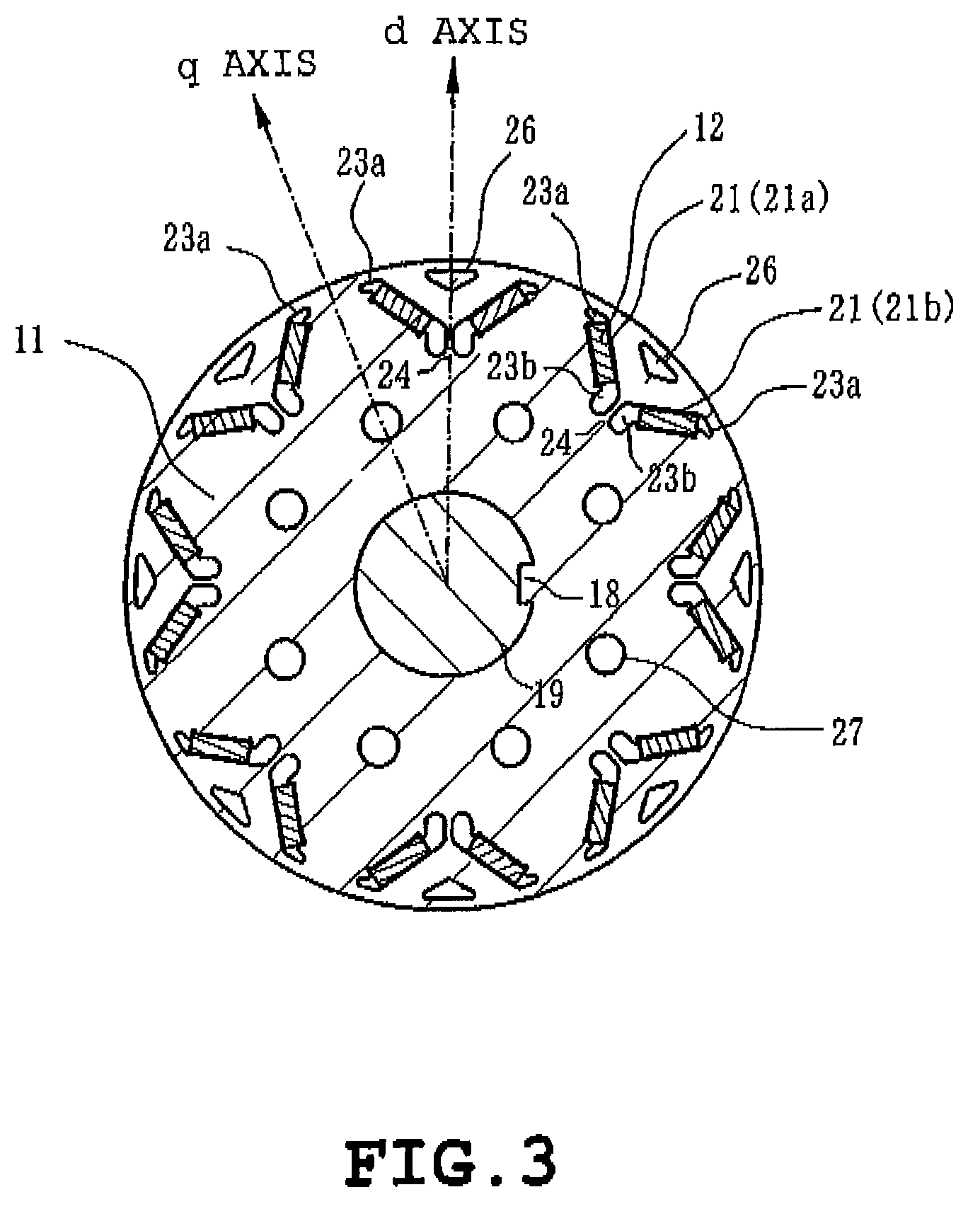Cooling structure for rotor core in electric rotating machine
a cooling structure and rotating machine technology, applied in the direction of cooling/ventilation arrangement, magnetic circuit rotating parts, shape/form/construction, etc., can solve the problems of increasing iron loss induced increasing iron loss induced near the surface of the iron core, and not negligible eddy current loss induced in the embedded permanent magnet in the rotor core. , to achieve the effect of suppressing the temperature increase thereof, avoiding the reduction of developed torque, and suppressing
- Summary
- Abstract
- Description
- Claims
- Application Information
AI Technical Summary
Benefits of technology
Problems solved by technology
Method used
Image
Examples
first embodiment
[0052]FIG. 2 is a longitudinal side section of the electric rotating machine including a d-axis of the rotor 5 of a The rotor 5 comprises a rotor core 11, permanent magnets 12 (see FIG. 3) embedded in the rotor core 11, two presser plates 14a and 14b pressing both end faces of the rotor core 11 respectively, and a rotating shaft 15. FIG. 3 is a sectional view of the rotor 5 taken along line 3-3 in FIG. 2. The rotor core 11 is formed by punching out a magnetic material into a planar shape as shown in FIG. 3, whereby a core piece is obtained. A plurality of the core pieces is stacked and axially crimped. The rotating shaft 15 is rotatably fitted in a hole 19 having a central key 18 of the rotor core 11.
[0053]The rotor 5 of the embodiment is a permanent magnet embedded type. A plurality of magnet insertion holes 21 through which the permanent magnets 12 are embedded is provided in a circumference of the rotor core 11. FIG. 3 shows the case where the number of poles is 8. Magnet insert...
second embodiment
[0069]In the second embodiment, when poured into the left hollow shaft portion 15a, the refrigerant flows into the voids 23b axially running through the rotor core 11 in contact with the permanent magnets 12. Accordingly, the permanent magnets 12 are cooled further effectively. Consequently, since the temperature increase of the permanent magnets is suppressed, the permanent magnets are prevented from demagnetization, whereupon reduction in the developed torque can be avoided.
[0070]A third embodiment of the invention will be described with reference to FIGS. 8, 9A and 9B. In these figures, identical or similar parts are labeled by the same reference symbols as those in FIGS. 2 to 5 of the first embodiment. FIG. 8 is a longitudinal section of the rotor 5 of the embodiment. FIGS. 9A and 9B illustrate an outer configuration of the left presser plate 14a pressing the rotor core 11 together with a sectional configuration of the rotating shaft 15 extending through the left presser plate 1...
third embodiment
[0074]In the third embodiment, when poured into the left hollow shaft portion 15a, the refrigerant flows through the three types of through-holes, that is, the d-axis through-holes 26, voids 23a, voids 23b in the rotor core 11. Accordingly, since the permanent magnets 12 and the rotor core 11 are cooled further effectively, reduction in the developed torque can be avoided.
[0075]A fourth embodiment of the invention will be described with reference to FIGS. 10, 11A and 11B. In these figures, identical or similar parts are labeled by the same reference symbols as those in FIGS. 8, 9A and 9B of the third embodiment. FIG. 10 is a longitudinal section of the rotor 5 of the embodiment. FIGS. 11A and 11B illustrate an outer configuration of the left presser plate 14a pressing the rotor core 11 together with a sectional configuration of the rotating shaft 15 extending through the left presser plate 14a. FIG. 11B is a view of a joint surface of the left presser plate 14a and the rotor core 11...
PUM
 Login to View More
Login to View More Abstract
Description
Claims
Application Information
 Login to View More
Login to View More - R&D
- Intellectual Property
- Life Sciences
- Materials
- Tech Scout
- Unparalleled Data Quality
- Higher Quality Content
- 60% Fewer Hallucinations
Browse by: Latest US Patents, China's latest patents, Technical Efficacy Thesaurus, Application Domain, Technology Topic, Popular Technical Reports.
© 2025 PatSnap. All rights reserved.Legal|Privacy policy|Modern Slavery Act Transparency Statement|Sitemap|About US| Contact US: help@patsnap.com



